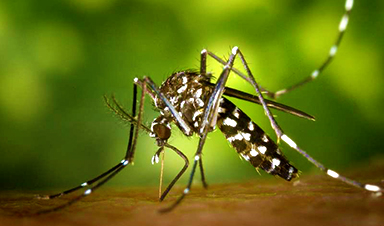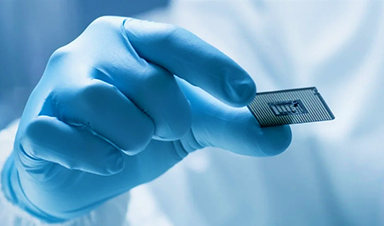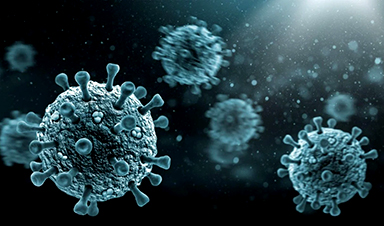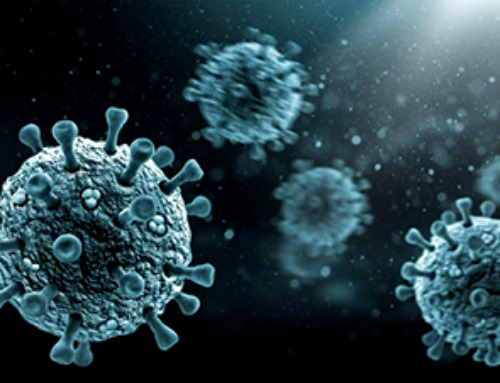Researchers at Albert Einstein College of Medicine have found that the virus responsible for chikungunya fever can spread directly from cell to cell—perhaps solving the longstanding mystery of how the virus, now emerging as a major health threat, can manage to escape antibodies circulating in the bloodstream.
A possible explanation for prolonged infections
“Previously, chikungunya virus was thought to spread in the body by infecting a cell, replicating within that cell, and then sending new copies of the virus into the bloodstream that then infect new cells,” said study leader Margaret Kielian, Ph.D., professor of cell biology and the Samuel H. Golding Chair in Microbiology at Einstein.
“However, we’ve found that the virus can also hijack a host cell’s cytoskeleton—the proteins that support cells and maintain their shape. The virus causes the infected cell to send out long thin extensions that make contact with uninfected neighboring cells, enabling the virus to safely and efficiently travel from one cell to another.”
Dr. Kielian and her colleagues have named these virus-induced structures intercellular long extensions, or ILEs. “This mode of viral transmission may not only shield some copies of the virus from the host’s immune response, but it may also explain why symptoms of chikungunya infection can persist for many months or years,” added first author Peiqi Yin, Ph.D., a postdoctoral fellow in Dr. Kielian’s lab.
In addition to fever, chikungunya infections often lead to chronic and debilitating arthritis. The virus is spread to humans by the bite of infected mosquitoes, which become infected by feeding on people who already have the virus.
Over the past 15 years, chikungunya virus has become an important and increasingly widespread human pathogen. Multiple outbreaks have caused millions of human infections in numerous areas including the Americas, Africa, Asia, Europe, and the Caribbean. The National Institute of Allergy and Infectious Diseases lists chikungunya virus as a Category B Pathogen, the second-highest priority for organisms posing threats to national security and public health.
Confirming a cell structure’s role
Dr. Kielian and colleagues discovered the presence of ILEs in chikungunya-infected cells several years ago, but it wasn’t clear whether the structures facilitated cell-to-cell viral transmission. The study, titled “Chikungunya virus cell-to-cell transmission is mediated by intercellular extensions in vitro and in vivo,” was designed to answer that question.
The first part of the study involved the use of cultured mouse cells. The researchers exposed the cells to chikungunya virus that expressed a fluorescent reporter protein, allowing them to observe that infectious virus particles were indeed being transmitted from cell to cell via ILEs. Cell-to-cell transmission occurred even in the presence of high quantities of neutralizing antibodies that were added to the culture medium.
To confirm this mode of cell-to-cell transmission in living animals, the researchers studied chikungunya infection in mice. Mice that were first inoculated with neutralizing antibodies and were then directly injected with chikungunya virus did not become infected. However, antibody-treated mice that were then injected with virus-infected cells (rather than just the virus) did develop chikungunya infections that were resistant to the neutralizing antibodies.
“Together, these studies show that ILEs shield chikungunya virus from neutralizing antibodies and promote intercellular virus transmission, both in vitro and in vivo,” said Dr. Yin. The mouse studies were conducted by Thomas E. Morrison, Ph.D., and his group at the University of Colorado School of Medicine in Aurora.
In a final set of studies, the researchers determined that certain antiviral antibodies were able to block ILEs from forming and to prevent cell-to-cell transmission. “If we can generate the production of such antibodies in human patients, or develop other methods to stop ILE formation, that could be especially helpful in combatting the chronic symptoms of chikungunya infection,” said Dr. Kielian. “We’re currently studying different ways to do this.”
News
Global Nanomaterial Regulation: A Country-by-Country Comparison
Nanomaterials are materials with at least one dimension smaller than 100 nanometres (about 100,000 times thinner than a human hair). Because of their tiny size, they have unique properties that can be useful in [...]
Pandemic Potential: Scientists Discover 3 Hotspots of Deadly Emerging Disease in the US
Virginia Tech researchers discovered six new rodent carriers of hantavirus and identified U.S. hotspots, highlighting the virus’s adaptability and the impact of climate and ecology on its spread. Hantavirus recently drew public attention following reports [...]
Studies detail high rates of long COVID among healthcare, dental workers
Researchers have estimated approximately 8% of Americas have ever experienced long COVID, or lasting symptoms, following an acute COVID-19 infection. Now two recent international studies suggest that the percentage is much higher among healthcare workers [...]
Melting Arctic Ice May Unleash Ancient Deadly Diseases, Scientists Warn
Melting Arctic ice increases human and animal interactions, raising the risk of infectious disease spread. Researchers urge early intervention and surveillance. Climate change is opening new pathways for the spread of infectious diseases such [...]
Scientists May Have Found a Secret Weapon To Stop Pancreatic Cancer Before It Starts
Researchers at Cold Spring Harbor Laboratory have found that blocking the FGFR2 and EGFR genes can stop early-stage pancreatic cancer from progressing, offering a promising path toward prevention. Pancreatic cancer is expected to become [...]
Breakthrough Drug Restores Vision: Researchers Successfully Reverse Retinal Damage
Blocking the PROX1 protein allowed KAIST researchers to regenerate damaged retinas and restore vision in mice. Vision is one of the most important human senses, yet more than 300 million people around the world are at [...]
Differentiating cancerous and healthy cells through motion analysis
Researchers from Tokyo Metropolitan University have found that the motion of unlabeled cells can be used to tell whether they are cancerous or healthy. They observed malignant fibrosarcoma [...]
This Tiny Cellular Gate Could Be the Key to Curing Cancer – And Regrowing Hair
After more than five decades of mystery, scientists have finally unveiled the detailed structure and function of a long-theorized molecular machine in our mitochondria — the mitochondrial pyruvate carrier. This microscopic gatekeeper controls how [...]
Unlocking Vision’s Secrets: Researchers Reveal 3D Structure of Key Eye Protein
Researchers have uncovered the 3D structure of RBP3, a key protein in vision, revealing how it transports retinoids and fatty acids and how its dysfunction may lead to retinal diseases. Proteins play a critical [...]
5 Key Facts About Nanoplastics and How They Affect the Human Body
Nanoplastics are typically defined as plastic particles smaller than 1000 nanometers. These particles are increasingly being detected in human tissues: they can bypass biological barriers, accumulate in organs, and may influence health in ways [...]
Measles Is Back: Doctors Warn of Dangerous Surge Across the U.S.
Parents are encouraged to contact their pediatrician if their child has been exposed to measles or is showing symptoms. Pediatric infectious disease experts are emphasizing the critical importance of measles vaccination, as the highly [...]
AI at the Speed of Light: How Silicon Photonics Are Reinventing Hardware
A cutting-edge AI acceleration platform powered by light rather than electricity could revolutionize how AI is trained and deployed. Using photonic integrated circuits made from advanced III-V semiconductors, researchers have developed a system that vastly [...]
A Grain of Brain, 523 Million Synapses, Most Complicated Neuroscience Experiment Ever Attempted
A team of over 150 scientists has achieved what once seemed impossible: a complete wiring and activity map of a tiny section of a mammalian brain. This feat, part of the MICrONS Project, rivals [...]
The Secret “Radar” Bacteria Use To Outsmart Their Enemies
A chemical radar allows bacteria to sense and eliminate predators. Investigating how microorganisms communicate deepens our understanding of the complex ecological interactions that shape our environment is an area of key focus for the [...]
Psychologists explore ethical issues associated with human-AI relationships
It's becoming increasingly commonplace for people to develop intimate, long-term relationships with artificial intelligence (AI) technologies. At their extreme, people have "married" their AI companions in non-legally binding ceremonies, and at least two people [...]
When You Lose Weight, Where Does It Actually Go?
Most health professionals lack a clear understanding of how body fat is lost, often subscribing to misconceptions like fat converting to energy or muscle. The truth is, fat is actually broken down into carbon [...]





















